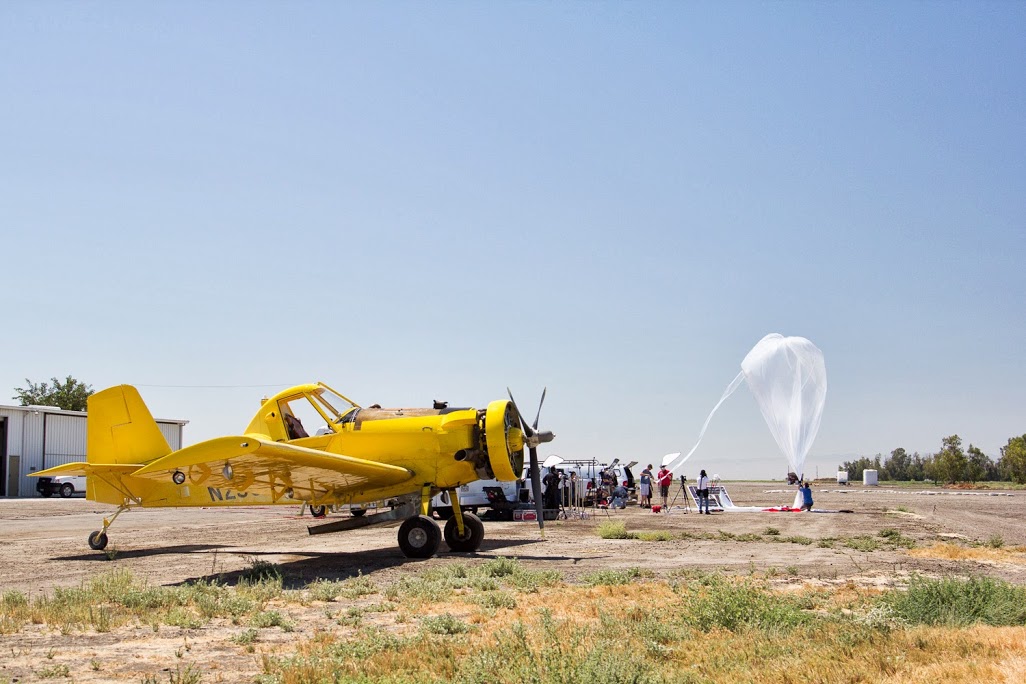When we last checked in with Project Loon here, they were in New Zealand working out some kinks and setting some records. Since getting back from New Zealand, the Project Loon team has set up shop in California’s Central Valley. The teamhasbeen busy conducting a series of research flights. As it’s been since the beginning, the purpose of their flights is to research various approaches for improving the technology that they are working with. They are working to improve the configuration and battery like of their solar panel power system, the balloon envelope design, their own radio configuration, etc. It seems like they’re following a “what can go wrong and how can we fix it?” approach.With each test flight they are able to gather a little more information and use that new info to develop their technology from those results.
Converse to the conditions in New Zealand, the Project Loon team organized a recent flight over Fresno so that they could get a read on the impact of having a flight over a big city (i.e. lots of other radio signals interfering with the internet transmission). What did they find? As suspected, providing internet access to a busy city, such as Fresno, is difficult because of the multitude of other radio signals that are present. A more rural area obviously has much less interference. In a busy city, with other radio signals, it’s easy for the balloons to pick up a lot of extra noise and interference with their antennae.
What does this mean? This translates to a higher error-rate while decoding the Loon signal. As a result, theeffectivebandwidth is decreased because the signal must be transmitted many times. The example Project Loon gives compares the interruption in signal to “trying to talk to a friend at a loud concert. The music interferes with your voice, so your friend might have to ask you to repeat what you said a few times in order to make sure she heard it correctly. This will result in a more basic conversation; instead of speaking about complicated topics in depth, you’ll have to spend a lot of your time repeating yourself just to make sure your friend can understand you!”
The solution that the Project Loon team is trying is increasing the signal strength to see if that will make a difference. The balloon tests over Fresno have definitely helped to test signal-noise interferences. As with anything in testing phase, the key is trial and error. Better to have all possible negative outcomes surface so that they can be remedied.
We’ll be keeping an eye on the sky here in California for Project Loon making its way around. Project Loon is also starting to branch out in the area of California’s Central Valley. They are looking for people in the area who are willing to have a Loon Internet Antenna installed on their house or business. There is a survey to fill out on their Google+ page if you’re interested. If anyone is participating in this offer, keep us posted! What has your experience been? How is the Loon internet working for you?
Check back in the coming weeks for more Project Loon updates.
Follow Project Loon and get involved in some Q&A here: https://plus.google.com/+ProjectLoon/posts
Photo Credit: https://plus.google.com/+ProjectLoon




